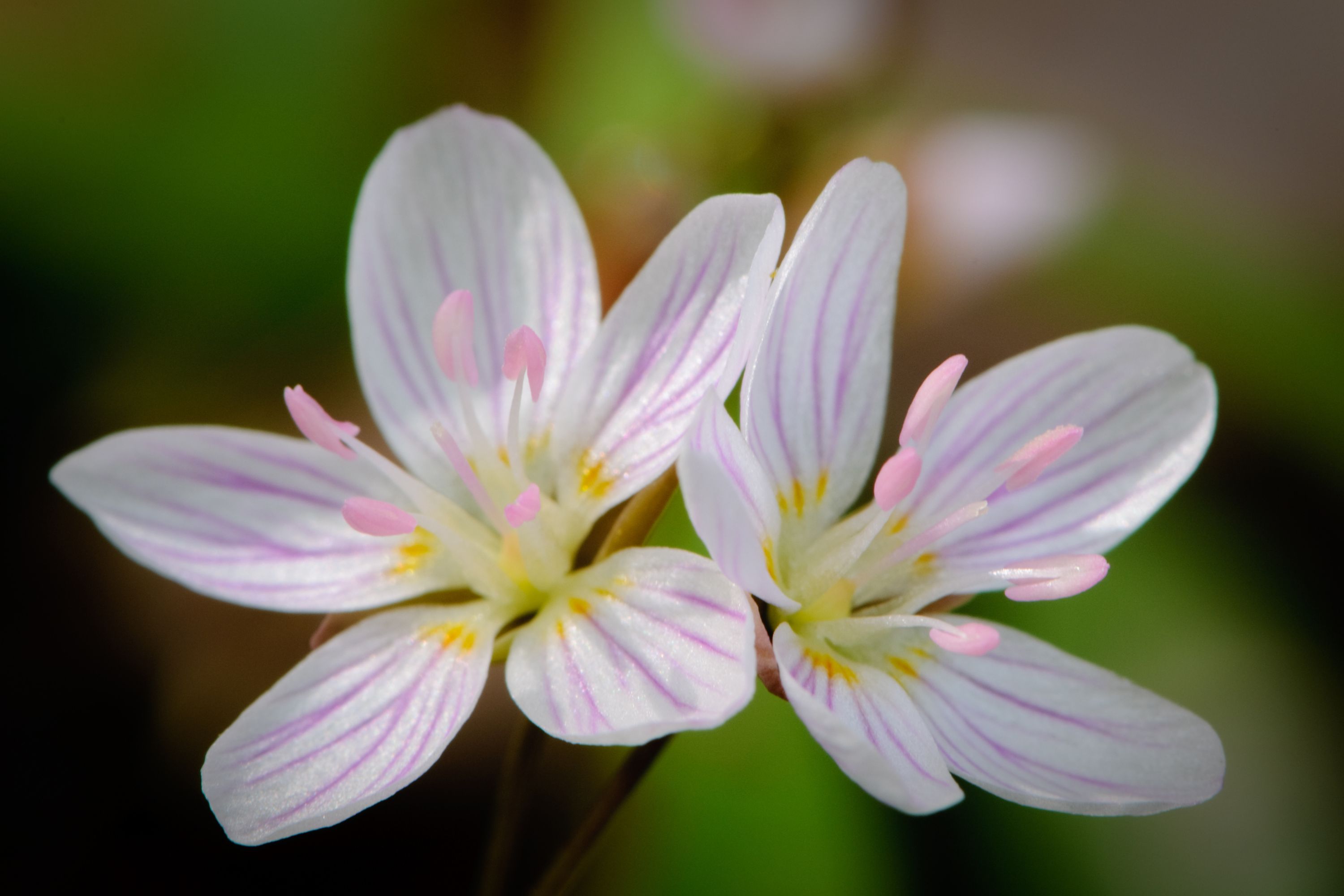Grass flower
(Claytonia virginica)

Description
Claytonia virginica, the Virginia springbeauty, eastern spring beauty, grass-flower or fairy spud, is an herbaceous perennial in the family Montiaceae. Its native range is eastern North America. Its scientific name honors Colonial Virginia botanist John Clayton (1694–1773). Springbeauty is a perennial plant, overwintering through a tuberous root. It is a trailing plant growing to 5–40 cm (2–16 in) tall. The leaves are slender lanceolate, 3–14 cm (1+1⁄4–5+1⁄2 in) long and 0.5–2 cm (0.20–0.79 in) broad, with a 6–20 cm (2+1⁄4–7+3⁄4 in) long petiole. The flowers are 0.7–1.4 cm (0.28–0.55 in) in diameter with five pale pink or white (rarely yellow) petals, and reflect UV light. It has a raceme inflorescence, in which its flowers branch off of the shoot. The individual flowers bloom for three days, although the five stamens on each flower are only active for a single day. Flowering occurs between March and May depending on part of its range and weather. The seeds are between 0.2 and 0.3 cm (0.08 and 0.12 in) in diameter and a shiny black.The seeds are released from the capsule fruit when it breaks open.Elaiosomes are present on the seeds and allow for ant dispersal. It is a polyploid, having 2n between 12 and 191 chromosomes. The largest number of chromosomes was observed in New York City.
Taxonomic tree:







